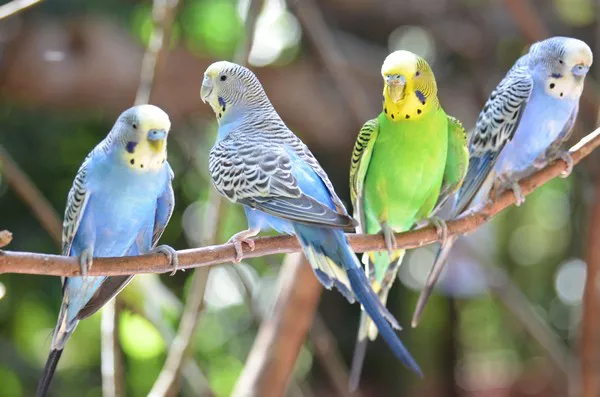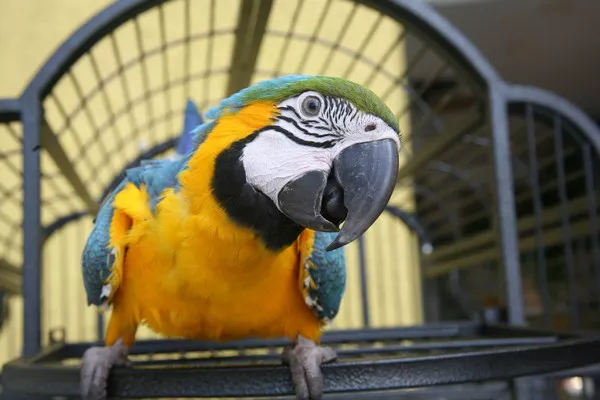Rabbits, like all pets, require a proper and balanced diet to maintain their health and well-being. While many people think of rabbits as small, delicate animals that graze on hay, their diet can be more complex depending on their age, breed, size, and specific needs. One area of concern for rabbit owners is weight management, as some rabbits are naturally prone to gaining weight more easily than others. This is where fattening feed for rabbits comes into play.
In this article, we’ll explore the concept of fattening feed for rabbits, why and when it is needed, the types of food that help promote healthy weight gain, and the best practices to follow when introducing fattening feeds into a rabbit’s diet. By understanding these principles, you can ensure that your rabbit is getting the right nutrition for its growth or weight goals.
1. Understanding Rabbit Nutrition
Before diving into fattening feed, it is important to understand the nutritional needs of rabbits in general. Rabbits are herbivores, meaning their diet consists of plants. Their digestive systems are specifically designed to process high-fiber, low-fat foods, such as hay, leafy greens, and a small amount of pellets. A rabbit’s diet should be carefully balanced to include the following nutrients:
Fiber: The most crucial component of a rabbit’s diet. Fiber is essential for proper digestion and prevents gastrointestinal problems like bloating and stasis.
Protein: Rabbits need protein for muscle development, but too much protein can lead to kidney problems. Protein is usually found in high-fiber hays like timothy or meadow hay.
Vitamins and Minerals: Rabbits require a range of vitamins, including vitamin A, D, and E, which help support immune function, skin health, and bone growth. They also need minerals such as calcium and phosphorus in proper balance.
Fats: While rabbits don’t need large amounts of fat in their diet, healthy fats play a role in maintaining energy levels and coat health. The right amount of fat is typically found in high-quality pellets or special treats.
2. Why Would a Rabbit Need Fattening Feed?
Not all rabbits require fattening feed. Most rabbits are quite active and maintain a healthy weight with regular access to hay, vegetables, and a small amount of pellets. However, there are some situations where fattening feed becomes necessary:
Underweight Rabbits
Some rabbits may struggle to maintain a healthy weight due to illness, stress, or a lack of sufficient food intake. For instance, if a rabbit has recently undergone surgery, is recovering from an illness, or is not eating enough, its body may burn more calories than it is taking in, leading to weight loss. In these cases, fattening feed can help provide the extra calories and nutrients necessary for recovery.
Pregnant or Lactating Does
Female rabbits, known as does, have increased nutritional needs when they are pregnant or nursing. A pregnant doe needs additional calories and protein to support the growth of her litter, while a lactating doe requires more energy to produce milk. Fattening feed can help ensure that she is getting enough nutrition during this critical time.
Growing Rabbits
Young rabbits, especially those under 6 months of age, are still growing and developing. They require more calories and nutrients than adult rabbits to support their rapid growth. Fattening feed may be recommended to ensure they get the proper nutrition during this phase of their life.
Senior Rabbits
Older rabbits, particularly those over 7 years of age, may experience a decrease in appetite or have difficulty chewing due to dental problems. This can result in weight loss and malnutrition. Fattening feeds designed for senior rabbits can provide the additional nutrients they need in a form that is easier for them to eat and digest.
3. Types of Fattening Feed for Rabbits
There are several options available when it comes to fattening feeds for rabbits. The goal is to provide a high-calorie, nutrient-dense diet that still supports the rabbit’s digestive health. Below are some common types of fattening feed that can be used for rabbits:
High-Fiber Pellets
Pellets formulated specifically for growing or underweight rabbits can be a good source of fattening nutrition. These pellets often contain a higher percentage of calories, protein, and fat compared to regular adult rabbit pellets. It is important to choose high-quality pellets made from grass hays and avoid those that contain too many seeds, fruits, or artificial ingredients, as these can be harmful to a rabbit’s digestive system.
Alfalfa Hay
While adult rabbits typically do best with timothy or meadow hay, young rabbits and pregnant or nursing does benefit from alfalfa hay, which is higher in calories, protein, and calcium. Alfalfa hay is an excellent fattening feed for young rabbits and can also be fed to underweight adults or those needing to gain weight.
Fresh Vegetables
Leafy greens such as kale, dandelion greens, spinach, and romaine lettuce can be an excellent way to provide extra calories while still offering the fiber needed for digestion. Vegetables like carrots and bell peppers are also nutrient-dense options, though they should be fed in moderation due to their higher sugar content.
Hay-based Treats and Mixes
There are specialized hay-based treats and mixes available on the market that are designed to provide extra calories for rabbits. These treats often contain ingredients like dried fruits, seeds, and nuts (in small amounts) that offer additional energy without compromising the rabbit’s digestive health. It’s crucial, however, to offer these treats sparingly and as part of a balanced diet to avoid obesity.
Critical Care Formula
Critical Care is a specially formulated powdered food often used by veterinarians to help rabbits who are recovering from illness or surgery. It is high in calories and protein and can be mixed with water to create a soft, easily digestible paste. This formula is particularly useful for rabbits who have stopped eating on their own and need additional support to regain their strength.
4. Best Practices for Feeding Fattening Food
While it may be tempting to simply increase the amount of food given to a rabbit, introducing fattening feeds should be done gradually and with careful consideration. Here are some best practices for feeding fattening food to rabbits:
Gradual Introduction
Introducing new foods or high-calorie feeds too quickly can cause digestive upset, so it’s important to do so gradually. Begin by offering small portions of the fattening food alongside the rabbit’s regular diet and slowly increase the quantity over the course of several days or weeks. This allows the rabbit’s digestive system to adjust to the change in its diet.
Monitor Weight and Health
When using fattening feed to help a rabbit gain weight, it’s essential to monitor the rabbit’s health and weight regularly. Keep track of changes in weight, energy levels, and eating habits. If the rabbit is gaining weight too quickly or developing other health issues, you may need to adjust the amount of fattening feed or consult with a veterinarian.
Balanced Diet
Even when focusing on fattening a rabbit, it’s crucial to maintain a balanced diet that includes hay, fresh vegetables, and plenty of water. Fattening foods should supplement the rabbit’s regular diet, not replace it entirely. A diet too high in fat or protein can lead to obesity, kidney problems, or digestive issues.
Offer Plenty of Fresh Water
Rabbits need constant access to fresh water, especially when consuming high-calorie foods that may increase their thirst. Make sure your rabbit always has access to clean water, whether it’s in a bowl or a bottle.
5. Common Mistakes When Using Fattening Feed
When it comes to using fattening feeds for rabbits, there are some common mistakes that owners should avoid. These include:
Overfeeding Pellets: While pellets can be an excellent source of nutrition, overfeeding them can lead to obesity and digestive problems. Always follow the recommended serving size and avoid free-feeding pellets, especially if the rabbit is already overweight.
Too Much Treats: Treats should be used sparingly. Overfeeding high-calorie treats can cause digestive issues and lead to an unbalanced diet.
Ignoring Rabbit’s Specific Needs: Different rabbits have different nutritional needs depending on their age, size, and health. Make sure you’re tailoring your fattening feed to suit your rabbit’s specific requirements.
Forgetting Fiber: Even when aiming to fatten a rabbit, don’t neglect the importance of fiber. Fiber is crucial for proper digestion and should still make up the majority of the rabbit’s diet.
Conclusion
Fattening feed for rabbits plays an important role in helping underweight rabbits, pregnant or nursing does, growing rabbits, and senior rabbits maintain a healthy weight. By providing a combination of high-fiber pellets, hay, vegetables, and specialized treats, you can help your rabbit gain weight in a healthy and balanced way. Always remember that any changes to your rabbit’s diet should be introduced gradually, and it’s essential to monitor their health to ensure they are gaining weight in a safe and effective manner.
A rabbit’s diet is an integral part of its overall health, and understanding the balance between fattening foods and regular nutrition will go a long way in ensuring that your rabbit thrives.
Related Topics:





















